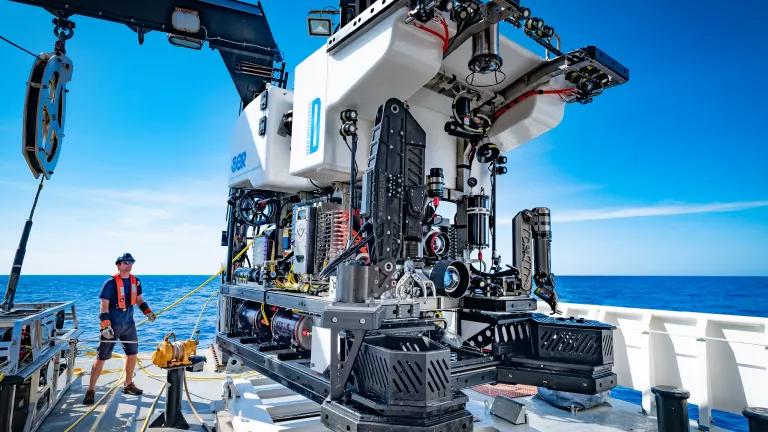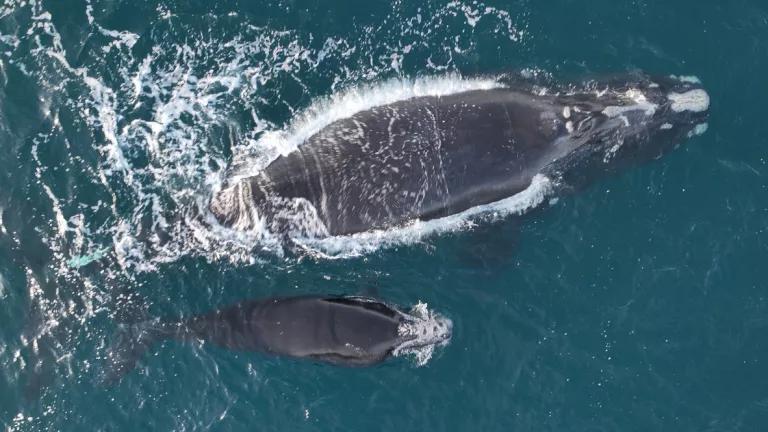I have a two-and-a-half-year old son whose favorite phrase is “I do it myself!” While it’s a constant amazement to me how much he actually can do by himself, there are certainly times when cooperation would result in a far better outcome—getting his shoes on the correct feet, for example. Other parents keep telling me that in another six months, or a year, or possibly two years, more cooperation will be possible.
In the meantime, working in the ocean policy world, it’s become clearer to me how easy it is to get caught up in particular “silos” when it comes to development off our shores. It turns out that my son isn’t the only one suffering from “I do it myself!” syndrome.
We demand a lot from our oceans, from fishing and tourism to shipping and energy development. Our oceans are a busy place and we rarely, if ever, take a step back to see how these activities are working – or not working – in synergy. Even more troubling, we often fail to examine the cumulative impact that industrial activities have on vulnerable ocean waters. After all, our oceans are already struggling with serious problems, including pollution, habitat destruction, climate change, and ocean acidification – and that’s all before we consider the effects of additional ocean industry.
With all the ways we use our oceans, we need to make sure we don’t overwhelm our oceans' ability to take care of us.
At last week’s Mid-Atlantic Regional Ocean Planning Workshop, dialog centered on how to plan “smart from the start” when it comes to increased offshore development.
Regional ocean planning can help us develop new offshore uses while safeguarding important ocean habitats and wildlife, and the valuable jobs, food, and recreation that depend on them. As shipping or naval activities increase in the Mid-Atlantic, for example, how do we ensure that the roughly 650,000 ocean-related jobs in the region aren’t negatively impacted? How do we expedite offshore wind farms in a way that protects the surrounding environment? These are important questions that regional ocean planning seeks to answer.
A recent study published in the Proceedings of the National Academy of Sciences found that using smart ocean planning in Massachusetts to protect key fisheries habitat and site new wind turbines would yield $10 billion more for the energy sector and prevent more than $1 million in losses to the fishery and whale-watching sectors, as opposed to the status quo. In other words, working together through a planning process can bring us to a better outcome than an every-man-for-himself approach.
Truly working together means everyone is involved in the discussion, from federal agencies to states and tribes, and from ports and renewable energy companies to fishermen and beachgoers. We all use and need the ocean. It’s up to all of us to develop a blueprint that protects ocean health and provides for sustainable use.
An example of this cooperation came at last week’s Mid-Atlantic workshop, where some of the nation’s oldest ocean users – the Shinnecock Indian Tribe – sat in the same room as the newest users – wind developers. These stakeholder discussions should become more common over the coming months, as the Mid-Atlantic Regional Planning Body (Mid-Atlantic RPB) was officially announced at the meeting. This new body – made up of state and tribal representatives, a regional fisheries council member, and federal ocean policy leads – will be working together to address the region’s ocean opportunities and challenges.
The Mid-Atlantic RPB has lots of work to do. First, the planning body should identify that its final plan will protect, maintain, and restore the health of our regional ocean and coastal ecosystems, both for the health of ocean life and for our own economic growth.
This plan must be based on a regional scientific assessment of ocean health and uses, just as a doctor would take a patient’s temperature before prescribing anything. By studying our ocean’s current state, we can identify areas important for spawning, breeding, feeding, and migrating ocean fish and wildlife—areas that should be protected. We can also ensure that the various impacts of ocean uses – alone and in concert – do not threaten the system’s health that we all depend on.
The Mid-Atlantic RPB should also foster input from a broad range of stakeholders, from surfers to fishermen, and small business owners to conservationists. Planning body leaders should take immediate steps to establish a public advisory committee to provide regular input and advice, and ensure that meetings are open to the public and all materials are made publicly available.
As one of the commercial fishermen present last week stated, “We are building a team. People don’t want to be on the bench… We want to make sure we all play and have fun doing it.” With smart, inclusive planning getting underway in the Mid-Atlantic, I’m looking forward to coordinated efforts to ensure a prosperous, healthy ocean future for our region.




